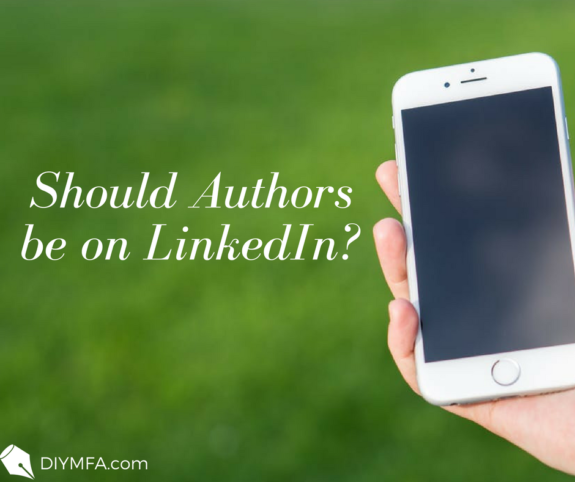Most authors have a presence on Twitter or Facebook, or both. But what about LinkedIn? Does this professionally oriented platform have a place in an author’s social media strategy?
As the third leg in the tried-and-true social media trifecta, LinkedIn has a large audience and a stable presence. But this network is often written off by authors because it’s not reader-facing. (Unless you’re writing professional development books.)
This is because many authors do not realize all that a LinkedIn presence can do for them. Even if you write children’s books or genre fiction, LinkedIn can be a valuable network for you.
You just have to know who your best audiences are—it’s not your readers.
Here are the four audiences you can reach on LinkedIn:
Booksellers (and Librarians)
Want your book on the shelves of bookstores or library? You need book shop owners and library curators to know you and your work—and to select them as part of their collection. With limited floor space, competition is tough.
So if you have a chance to make a good impression on a bookseller, follow up by connecting on LinkedIn. It can be a great place to stay visible between releases.
Reviewers
Reviewers are another very important audience for authors. Reviews can be one of the best was to reach new readers with your newest release, and also serve as critical social proof for the quality of your work.
But with every author vying for review slots, standing out is tough. A reviewer won’t ever be able to guarantee you a writeup, but if you have a positive, professional relationship with them, they’re sure going to be happier to work with you when opportunities arise.
Event organizers
Every region has tons of authors eager to participate in their area’s book fairs. But how many of those authors take the time to connect with the organizers between events?
Again, this isn’t about schmoozing or earning special favors. But if an event organizer actually recognizes your name in the presentation applications, and especially if they associate your name with a put-together, professional presence, that gives you an edge.
Other Authors
One of the best things about LinkedIn is its Groups. There are groups for almost everything on there, including a wide range of Groups for authors and publishing. This can be a great place to swap support, successes and lessons learned together.
However, a lot of authors start offering author-facing services as they gain experience to help newer authors get a stronger start. If you’re one of them, LinkedIn Groups can be a great way to demonstrate your expertise directly to your prospective clients.
The Power of Influencers
You may be thinking, “Sure, this is all well and good, but why would I put precious time into relationships with gatekeepers instead of building relationships directly with readers?”
It’s a good question to ask, and if your time is extremely limited, I would advise you to focus on readers instead. But if you have just a little time for it, building relationships with these four audiences can be powerful.
Why? Because these audiences are not just gatekeepers—they’re also influencers.
This means that these are groups who heavily influence what readers read, and what they think about what they read.
With so many books out there, people rely on influencers to curate strong collections and recommendations to help them make decisions about what to pick up next.
LinkedIn offers authors a great way to connect with these key influencers and demonstrate that you are professional and accomplished, and can help open the door for future opportunities.
 By day, Emily Wenstrom, is the editor of short story website wordhaus, author social media coach, and freelance content marketing specialist. By early-early morning, she is E. J. Wenstrom, an award-winning sci-fi and fantasy author whose debut novel Mud was named 2016 Book of the Year by the Florida Writers Association.
By day, Emily Wenstrom, is the editor of short story website wordhaus, author social media coach, and freelance content marketing specialist. By early-early morning, she is E. J. Wenstrom, an award-winning sci-fi and fantasy author whose debut novel Mud was named 2016 Book of the Year by the Florida Writers Association.







